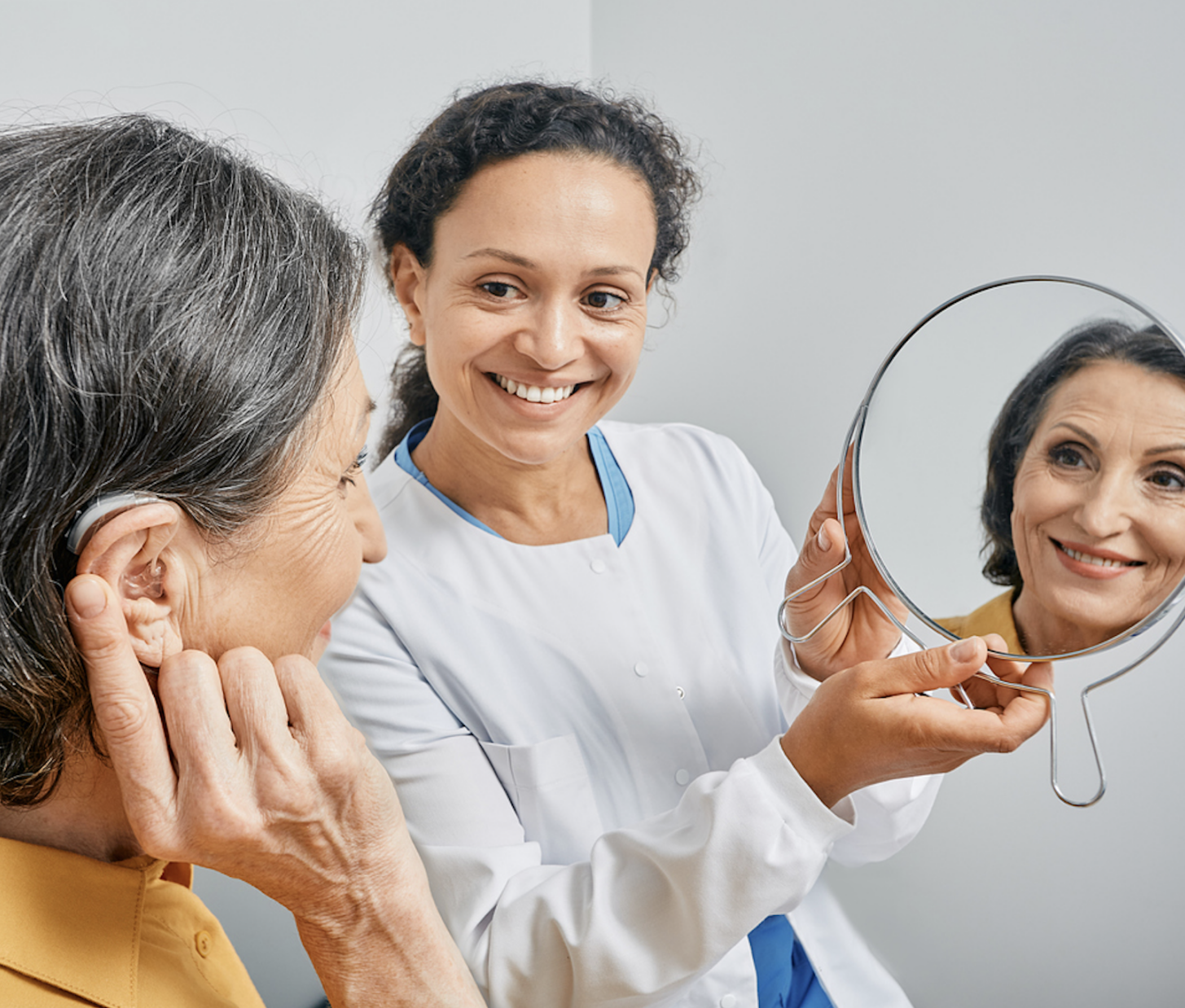Play It By Ear: How Are You Adjusting To Hearing Aids?
September 13, 2023

It’s been almost one year since over-the-counter hearing aids came on the market. Since that time, agebuzz, along with many other publications, has focused on such issues as getting access to these new devices, assessing the benefit of over-the-counter versus prescription hearing aids, and determining what models, features and prices are best for your unique situation. At least one thing is certain: the need for hearing aids has never been greater and continues to expand as the population ages. While it’s been reported that 15% of US adults over age 18 (over 37 million people) have trouble hearing, the percentage of adults with disabling hearing loss rises as the population ages. Estimates are that 25% of those between the ages of 64-74 have disabling hearing loss, and that number explodes to 50% for those 75 and over. In fact, in a recent study published in JAMA Network Open, researchers found that by age 90 years, 96.2% of adults had hearing loss. However, only 29.2% of those with hearing loss used hearing aids. That suggests a huge disconnect between need and reality when it comes to hearing aids. This is all the more important given recent research connecting the use of hearing aids with better balance and less risk of cognitive decline. For an easy-to-understand guide to protecting your hearing and addressing your hearing loss, put on your headphones and listen (or read) here.
So the hope is that many agebuzz readers who suffer from hearing difficulties have taken the leap and begun to use hearing aids, whether over-the-counter or prescription-based. That, however, is not the end of the story, as you likely know. Getting adjusted to using hearing aids can be a long process, one that involves patience and perseverance. As anyone who has tried hearing aids can tell you, it’s not like putting on a pair of eyeglasses: your hearing doesn’t automatically return to normal once you insert a hearing aid. While in quiet environments the aids can help you hear a conversation better, there are still accommodations and adjustments to be made and success very much depends on your adherence to professional recommendations. Perhaps what you need to realize is that within the first few weeks, your brain needs time to adjust to the new sounds it’s experiencing. In fact, it’s recommended that you start by wearing the aids for a few hours in your home and work your way up to longer periods once you’ve adjusted and learned how to manipulate the features to suit your needs and different environments (assuming your hearing aids have features that can be adjusted). Once you’re comfortable, it’s then thought that consistent wearing of the hearing aids is your best chance for success.
As we said, different settings may require you to adjust different features along with your behavior, so as to obtain the best hearing you can with your hearing aids. So, for example, in noisy social settings where your hearing aids may not necessarily allow you to hear distinct voices but may instead just amplify the ambient noise, you may become stressed or frustrated because you can’t hear your tablemates or participate in intimate conversations. Some strategies to help with this? Ask your companions to speak slowly and clearly (not more loudly) and have them directly in front of you so you can see facial cues and their lips. If you’re in a noisy restaurant, ask for a table against a wall and face the wall so the noise from the restaurant is behind you. A brightly lit environment will also allow you to see your companions better and thus understand them better.
And there are accessory devices that can help you improve the value of your hearing aids. For example, did you know that you may be able to use your smartphone as a remote microphone (if your hearing aid has this feature) so that your companion can speak into your phone and the sound can directly go into your hearing aid? You can also purchase remote microphones that can accomplish the same thing. Many venues also allow you to tap into their telecoil or hearing loop systems so that sound from the venue (such as actors on a stage) is directly transmitted into your hearing aid. Something to ask about the next time you’re heading out to a performance. And do you find that your hearing aids are moist or have gotten wet? That moisture can be the one thing that really damages your hearing aids. There are now products on the market that you can use at home to dry your hearing aids and keep them moisture-free. So put down your hair dryer and take a look at these products.
While research is ongoing about ways to potentially protect hearing or even reverse some level of hearing loss, the reality is that most of us, or our loved ones, will have no choice but to deal with the reality of substantial hearing loss as we get into our later years. But even with disabling hearing loss, hearing aids and savvy strategies for using them can help ensure that you’re still a full participant in all aspects of daily life. Getting hearing aids and becoming used to them is the first step to ensuring that full participation.







